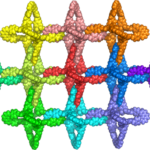本発明は、製薬、自動車、食品加工、炭素回収、その他の産業に利益をもたらす可能性がある The invention could benefit pharmaceutical, automotive, food processing, carbon capture and other industries
2023-01-18 バッファロー大学(UB)
・今回、科学者たちは、比較的安価に製造・運用できる画期的な装置、新しいホイッピング・ジェット・エアロゾル噴霧器に関する研究を発表した。この技術は、Cell Press誌「Cell Reports Physical Science」に1月11日に掲載されました。
・この研究は、液体ジェット技術の第3世代の進歩にあたります。1998年に円筒形の液体ジェットが最初に登場し、2018年には平らな液体シートジェットが続きました。
・新しいホイッピングジェットは、2次元プロファイルで均質な液滴を生成するため、この種のものとしては初めてだと、ローレンスバークレー国立研究所のバークレーシンクロトロン赤外線構造生物学イメージングプログラムのディレクターである共著者のHoi-Ying N. Holman博士が述べています。
・この研究で研究者たちは、解析的流体力学(数値解析とデータ構造を用いて流体の流れに関する問題を解析・解決する流体力学の一分野)が果たした重要な役割について論じている。
<関連情報>
- https://www.buffalo.edu/news/releases/2023/01/008.html
- https://www.cell.com/cell-reports-physical-science/fulltext/S2666-3864(22)00539-2
異方性マイクロ流体ジェット装置からのホイッピング・インスタビリティに基づくセルフシーケンス・マルチ単分散2次元スプレーの研究 A sui generis whipping-instability-based self-sequencing multi-monodisperse 2D spray from an anisotropic microfluidic liquid jet device
Sankar Raju Narayanasamy ,Ramakrishna Vasireddi ,Hoi-Ying N. Holman,Martin Trebbin
Cell Reports Physical Science Published:January 11, 2023
DOI:https://doi.org/10.1016/j.xcrp.2022.101221

Highlights
•Very-high-throughput multi-monodisperse spray from gas-focused microfluidic device
•Unique steady-state whipping liquid jet attained without any need for electrification
•2D profile spray: A suitable sample environment for cryo-EM, mass spectrometry, and XFELs
•A potential platform for drug formulation, carbon capture, and food processing
Summary
Well-defined aerosols pave the way for versatile basic and applied research. Here, we demonstrate a unique whipping instability that generates from a high-aspect-ratio microfluidic device resulting in a unique steady-state gas-focused whipping jet (WJ) without any need for electrification. This WJ device emanates a multi-monodisperse whipping spray jet with a two-dimensional (2D) profile. We demonstrate this phenomenon based on various fluidic parameters theoretically and experimentally. The 2D WJ’s unique behavior is derived using analytical fluid dynamics to explain jet diameter, whipping regime, and spreading angle. The phenomenon is further characterized experimentally by measuring the angle with respect to the flow rate, the distances between droplets, the droplet shapes, and the reproducibility of these parameters. We also explain the precise fabrication of such inexpensive devices. Lastly, we highlight these devices’ potential use as sample environments in versatile applications ranging from cryoelectron microscopy over mass spectrometry to drug formulation and structural studies at X-ray free-electron lasers.



